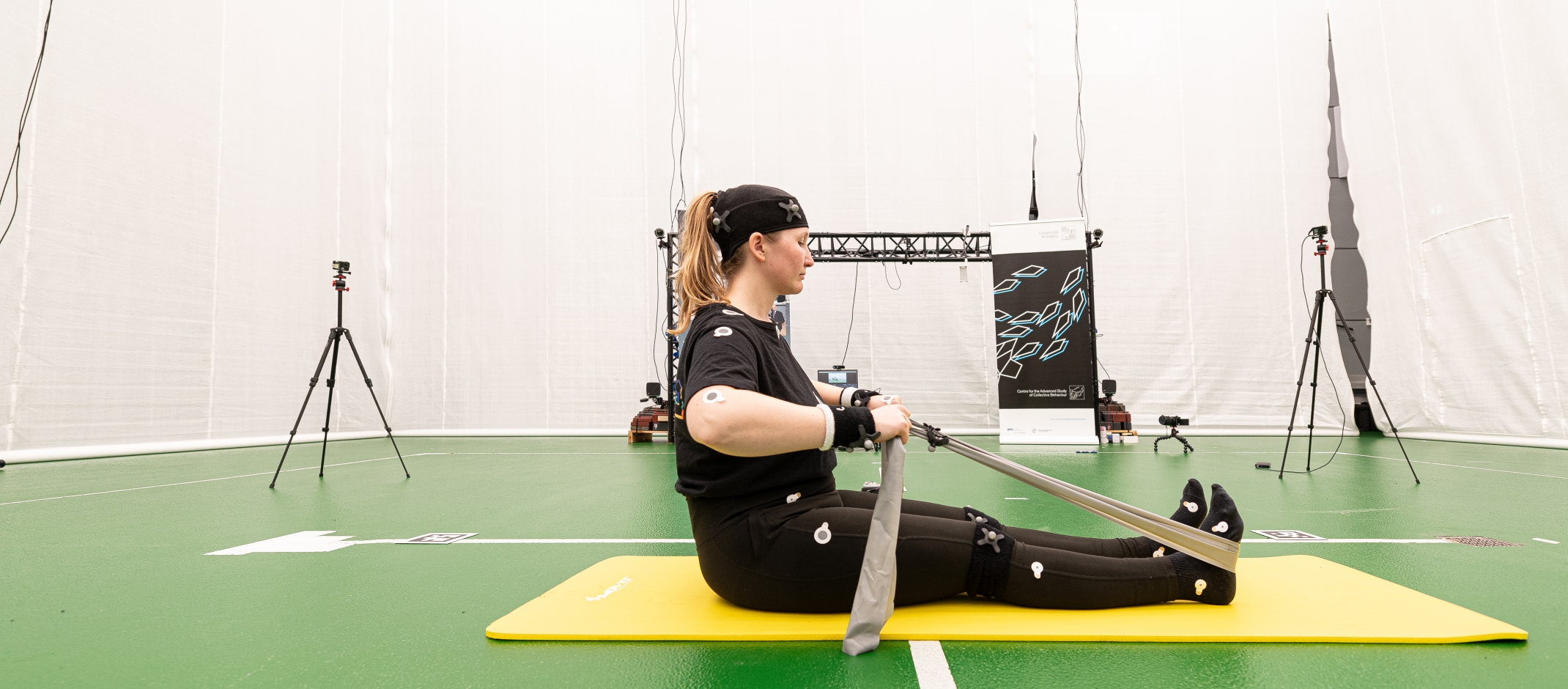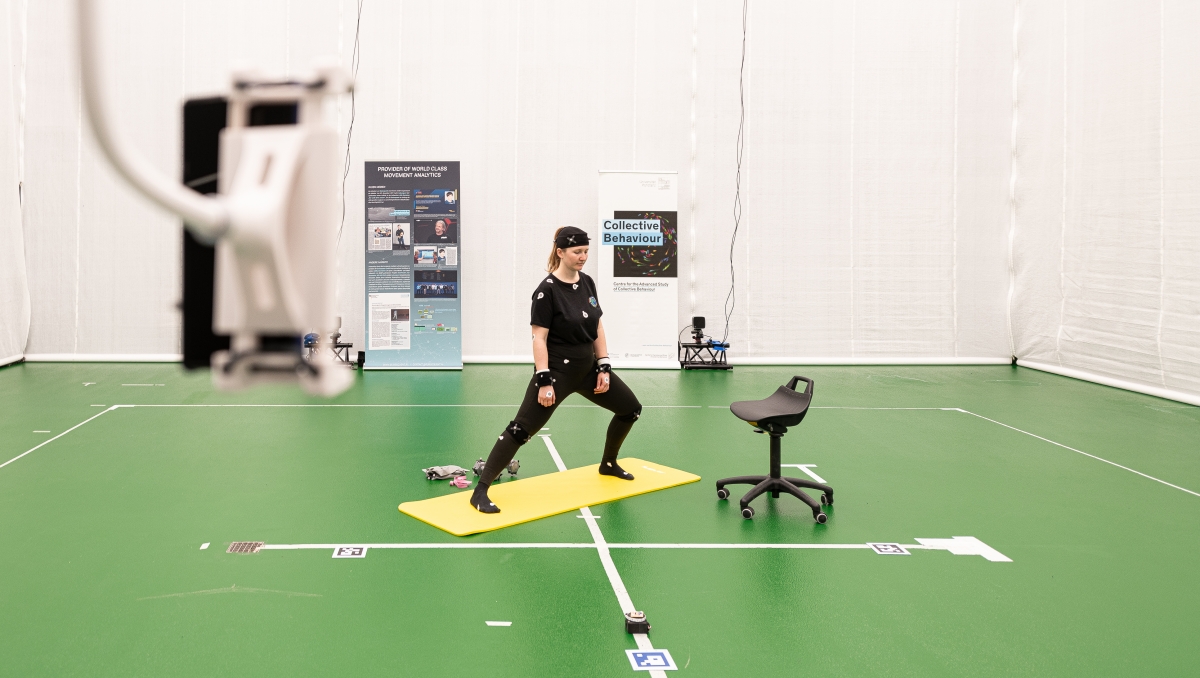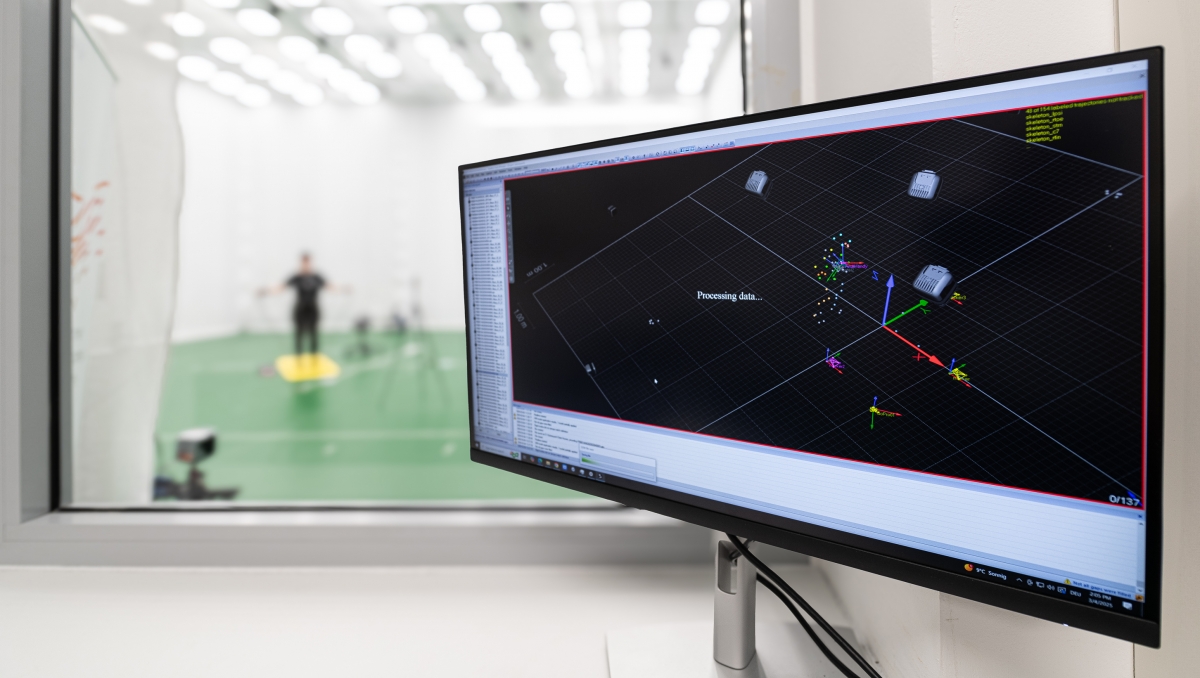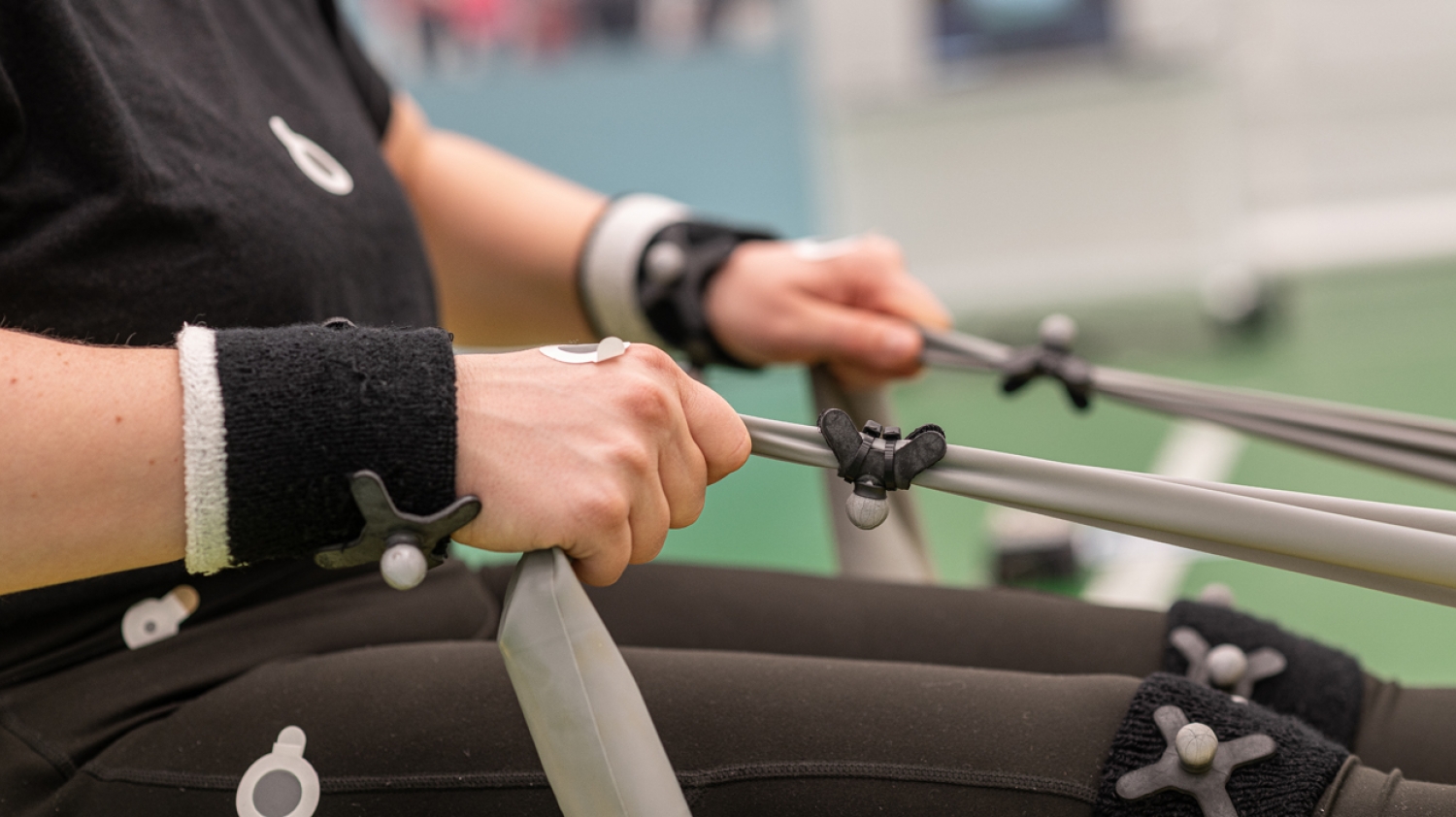The personal trainer for your pocket

Have you ever needed physiotherapy? Then you may have experienced this: When the physiotherapist shows you the exercises, they seem quite simple. The movement sequences are logical and easy to remember. But as soon as you want to repeat the exercises at home, the first doubts creep in: What was the exact posture again? Should the movement go forward or rather slightly sideways? And where should I place the resistance band? Correct execution of the exercises is crucial for the success of the therapy. Incorrect movements not only will have no effect but can even exacerbate the symptoms in the worst case.
Now imagine having someone at your side around the clock to answer exactly these kinds of questions – whether about therapeutic exercises or fitness training. You would get direct feedback for each unit you do at home: Was the exercise performed correctly? Should you do something differently to achieve the best possible effect? What sounds like having a personal trainer, which is likely to be unaffordable for many, could soon be accessible to everyone: as a digital solution for smartphones and tablets. Modern image analysis technologies as well as expertise and the necessary entrepreneurial spirit from Konstanz will make this possible. The mastermind behind it all: Konstanz-based start-up Subsequent GmbH.
Motion analysis using artificial intelligence
Subsequent GmbH focuses on state-of-the-art motion tracking and analysis using artificial intelligence (AI). Founded in 2021 by computer scientist Manuel Stein from Konstanz, the young company works primarily with customers from the health and sports sectors. Subsequent has already been the official data partner of the Austrian national football team and is currently cooperating with the German Ice Hockey Federation and the German Alpine Club, among others – with the latter in a speed climbing project.
What is special about the AI-based processes that the Subsequent team is developing? They can reconstruct three-dimensional skeletal movements from simple 2D video images. The video recordings do not even have to be of particularly high quality. Comparable movement analyses usually require expensive, carefully calibrated equipment.
"The method allows us to analyze human movement sequences using images that were recorded with normal consumer hardware, such as a smartphone camera. And all this in real time and with comparatively low computing power. This puts us well ahead of the competition."
Manuel Stein, computer scientist and founder of Subsequent GmbH
In order to stay ahead, Stein and his team are continuously developing their processes. Often, they work closely with researchers from the University of Konstanz, for example, in the current "THERESA" project (in German), which is funded by the Federal Ministry of Research, Technology and Space. THERESA is a joint project of Subsequent GmbH, Trier University of Applied Sciences and Daniel Keim's research team in the Department of Computer and Information Science at the University of Konstanz, where Stein himself completed his doctorate before founding Subsequent.
Now, what exactly does the collaboration in the THERESA project look like – and how does it bring us closer to the goal of a digital personal trainer? "The project is about taking our already very efficient movement tracking for training and therapy exercises to the next level. In the future, we want to analyze not only the movements but also include the use of small physiotherapy equipment such as dumbbells or resistance bands in our evaluations. So far, this has not been technically possible", says Stein. The primary aim of the project is therefore to train and test new AI models that will enable these extended functions.
A broad database is the key
The first steps towards this goal were already taken in spring 2025 on the University of Konstanz campus. Anyone visiting the university's Imaging Hangar at this time would have witnessed a rather unusual scene: In the middle of the almost gymnasium-sized high-tech laboratory of the Cluster of Excellence "Collective Behaviour" in Konstanz, where researchers usually monitor the behaviour of entire locust swarms or watch robot groups learn to work together, a single athlete is doing a workout with various small devices on her yoga mat. Several dot-shaped reflectors have been fitted to her clothing and training equipment. A veritable sea of cameras – from professional television cameras and action cams to simple mobile phone cameras and web cams – is pointed at the athlete and captures her every movement as she goes through her 30-minute training programme.
There is an easy explanation for this particular setup: The countless cameras record material for the AI models that are developed in the THERESA project and that will later be able to reliably analyze images of different quality and origin. "We have to feed our image analysis AIs the most diverse image material possible so they can learn to recognize movements and objects from different perspectives, in different contexts and with varying image quality", explains Philip Zimmermann, Chief Technology Officer at Subsequent. "For the same reason, we didn't have just one athlete do the training session, but a total of 25 participants – men and women, young and old, experienced and inexperienced athletes. This diversity in the training data is crucial for the resulting robustness of the models."
No assessment without reference material
The many cameras and the space they required were not the main reason why the training data was collected in the Imaging Hangar at the University of Konstanz – an ordinary gym would have been sufficient. What is so special about the Hangar is under its ceiling: a motion capturing system. This is a system that is primarily used in the film and video game industry to animate virtual characters based on the movements of real people. Special infrared cameras track the position of markers on the actors' bodies. The movement data obtained is then transferred to the virtual characters to make their movements look as realistic as possible. Small reflectors – like the ones on our athlete's training outfit – are used as markers, and their positions in the room are tracked precisely.
The Subsequent team attaches the reflectors to the clothing of the test subjects specifically at the joint points, i.e. at the points between which the AI will later reconstruct the "bones" of the digital skeleton model. "This provides us with ground truth data, that is reference values that we need for developing our processes. As the motion capturing system is very precise, we can assume that the joint positions recorded are objectively correct. They can therefore serve as a benchmark when testing and evaluating the accuracy of our models", explains Zimmermann. And the reflectors on the dumbbells and resistance bands? They make it possible to precisely track how the small devices are moved during the exercises. Even the stretching status of the resistance band can be recorded by measuring the distance between its reflectors.
© University of Konstanz, Inka ReiterThe reflectors are not only attached to the test participants' bodies, but also to the training equipment. This enables, for example, the tracking and exact calculation of the elongation of the resistance band.
Why wander far and wide?
While the technical aspects of the THERESA project are being driven by the computer scientists at Subsequent GmbH and the University of Konstanz, the therapy-related scientific expertise comes from Trier University of Applied Sciences: Steffen Müller, a professor of physiotherapy specializing in movement science and applied biomechanics, and his team helped to select the therapeutic exercises. They evaluate the quality and intensity of how the athletes execute the exercises, and they will also help to validate the AI models developed. The goal is that these models will not only recognize the exercises and equipment, but also record the forces generated and the training intensity, thus enabling analyses that go far beyond simply counting repetitions. At the same time, this will make it possible to assess individual performance and give the real-time feedback described above.
In other projects, the Subsequent team often works together with local partners from the health sector – and with great success: The company has already won several prestigious start-up awards in the past, including first place nationwide in the "Digital Start-Up of the Year 2023" competition organized by the then Federal Ministry for Economic Affairs and Climate Action (BMWK). And yet, will it become necessary to move to one of Germany's "start-up metropolises" at some point in order to remain innovative in the long term and be involved in the start-up scene? "In fact, we are often asked why we don't go to Berlin, Munich or Karlsruhe", says Stein. "But we have everything we need here in Konstanz: a strong university that supports us from a scientific perspective in our further development, as well as committed partners from the healthcare sector, such as Klinikum Konstanz or Schmieder Clinic, who are just as passionate about innovation as we are. So we have no reason to leave. On the contrary: We are delighted to be able to give something back to the region where we have our roots and that has contributed to our growth and development."
Subsequent GmbH and the University of Konstanz
Subsequent GmbH has always been closely connected with the University of Konstanz: In 2019, Manuel Stein first presented his idea to Kilometer1, the joint start-up initiative of the University of Konstanz and the HTWG Konstanz - University of Applied Sciences. Lisa Kuner, start-up and funding consultant at Kilometer1 and head of the Staff Unit University Development, Research and Transfer at the University of Konstanz, has supported the Subsequent team in various matters to this day. A year later, the founding team of Manuel Stein, Philip Zimmermann and Marc Lüttecke – all graduates of the University of Konstanz – obtained an EXIST start-up grant from the Federal Ministry for Economic Affairs and Energy. Daniel Keim, professor of data analysis and visualization in Konstanz, was their technical project mentor at that time. Following the founding of Subsequent GmbH in 2021, a cooperation agreement enabled the continued use of the university's premises and IT infrastructure. Several federally funded project partnerships with Konstanz researchers followed, especially from the fields of computer science and sport science for health.




